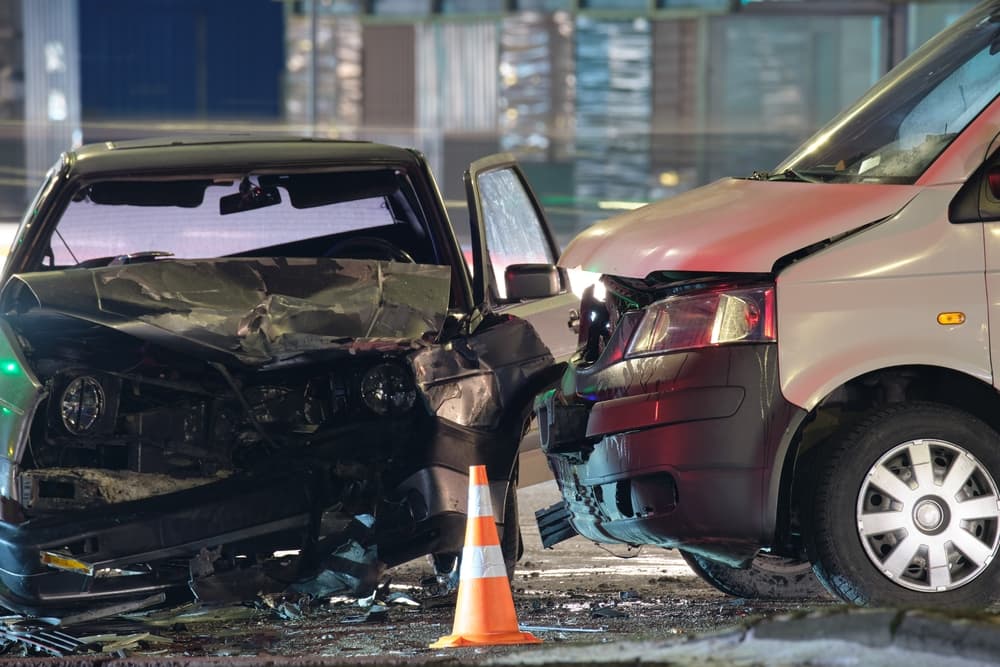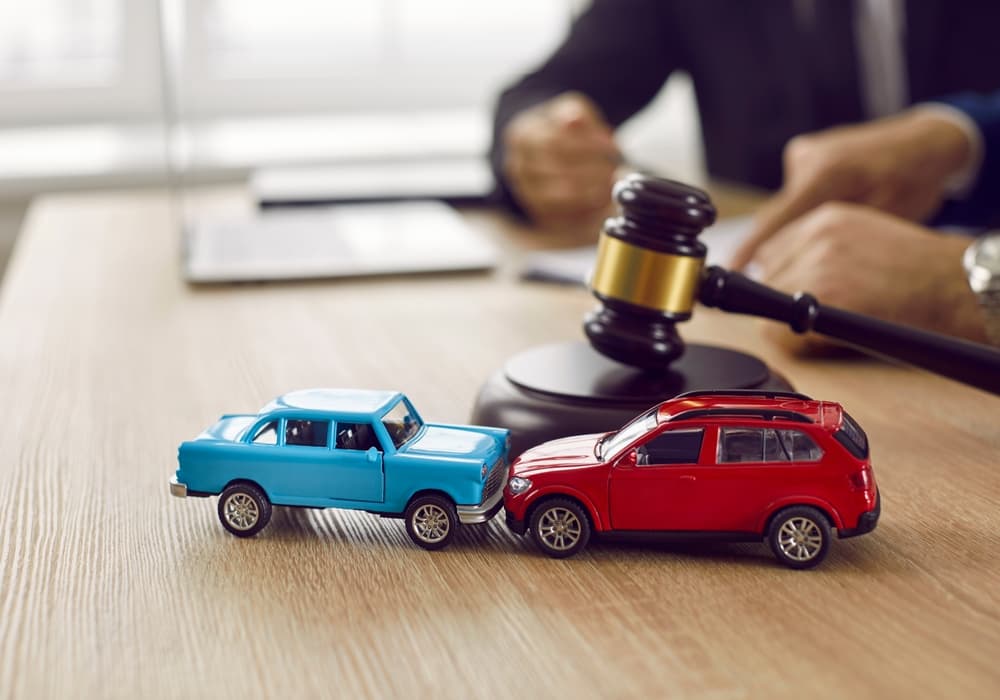What If I Am Partly to Blame for My Car Accident?
Car AccidentEven if you believe you are partly to blame for your car accident in South Carolina, you may still be able to recover compensation for your injuries. The key is understanding how our state’s specific laws on shared fault work, which can make a significant difference in the outcome of your case.
Many people mistakenly think that being partially at fault means they cannot recover anything for medical expenses, lost wages, or pain and suffering. In reality, a knowledgeable car accident lawyer can often help you pursue compensation by proving the other driver’s greater share of negligence and protecting your rights throughout the claims process.
Key Takeaways about If You Are Partly to Blame for a Car Accident
- South Carolina operates under a legal principle called modified comparative negligence for personal injury cases.
- An injured person can seek financial recovery if they are determined to be 50 percent or less at fault for the accident.
- The total compensation an individual receives is reduced by their assigned percentage of fault.
- Insurance companies may attempt to shift as much blame as possible onto the injured party to lower their financial responsibility.
- Gathering strong evidence is crucial for accurately establishing the degree of fault for all parties involved in a collision.
Understanding South Carolina’s Car Accident Fault System

South Carolina is what’s known as a “fault” or “tort” state when it comes to car accidents. In simple terms, this means the person who caused the accident is responsible for paying for the damages of those they injured. This is different from “no-fault” states, where your own insurance company pays for your initial medical bills regardless of who caused the crash.
Because we are a fault state, determining who is responsible—and by how much—is the central issue in any car accident claim. It’s rarely a black-and-white situation. Often, the actions of more than one person contribute to a collision. For example, one driver might have run a red light, while the other was driving a few miles per hour over the speed limit. In this scenario, both drivers might share some level of responsibility.
This is where the legal concept of comparative negligence comes into play, a rule that shapes how personal injury cases are handled throughout the state, from the shores of Folly Beach to the bustling streets of downtown Charleston.
What Is Modified Comparative Negligence? A Simple Explanation
When you are partly to blame for your car accident, South Carolina law applies a specific rule to figure out if you can still receive compensation. This rule is called modified comparative negligence. Let’s break down what that means.
The law states that you can recover damages as long as your share of the fault is not greater than the fault of the person or people you are making a claim against. In most two-car accidents, this means you can be found up to 50% responsible and still have a valid claim.
Here’s how it works in practice:
- If you are 50% or less at fault: You can recover compensation, but the amount you receive will be reduced by your percentage of fault. For example, if you have $100,000 in damages but are found to be 20% at fault, your final award would be reduced by 20%, leaving you with $80,000.
- If you are 51% or more at fault: Unfortunately, if you are found to be more at fault than the other party (51% or more), South Carolina law bars you from recovering any compensation at all.
This 51% bar is why the percentage of fault is so heavily contested by insurance companies. Shifting just a few percentage points of blame can be the difference between a fair car accident settlement and receiving nothing.
How Is Fault Determined After a South Carolina Car Crash?
Assigning a percentage of fault isn’t just guesswork. It is a detailed process that involves gathering and analyzing all available evidence from the accident. Insurance adjusters and, if necessary, lawyers and courts will look at a wide range of information to piece together how the crash occurred and who was responsible.
Key pieces of evidence often include:
- The Official Police Report: This document contains the responding officer’s initial observations, diagrams of the accident scene, statements from drivers and witnesses, and sometimes the officer’s opinion on who violated a traffic law;
- Driver and Witness Statements: What you, the other driver, and any passengers or bystanders saw and heard can be powerful evidence;
- Photographs and Videos: Pictures of the vehicles, skid marks on the road, property damage, and any nearby traffic or surveillance cameras can provide an objective view of the incident;
- Vehicle Damage: The location and severity of the damage to the cars involved can help accident reconstruction professionals understand the points of impact and the forces at play;
- Expert Analysis: In complex cases, professionals may be brought in to reconstruct the accident scene to provide a scientific opinion on factors like speed and driver actions.
All of this information is used to build a complete picture of the event, which helps in making a fair and accurate determination of fault.
Common Scenarios Where You Might Be Partly to Blame for a Car Accident

Many drivers are surprised to learn that certain actions, even if they seem minor, can lead to them being assigned a portion of the fault. It’s important to understand these common situations, as they frequently arise in car accident claims. A driver could be considered partially responsible for a collision even if the other driver committed a more serious traffic violation.
Here are a few examples of actions that could result in shared fault:
- Speeding: Even if someone else pulls out in front of you, if you were driving over the speed limit, it might be argued that your excess speed reduced your ability to stop in time;
- Distracted Driving: Looking at a phone, adjusting the radio, or being otherwise distracted at the moment of impact could make you partially responsible;
- Failing to Use a Turn Signal: If you make a sudden turn or lane change without signaling and are hit by a speeding car, both drivers might be found to share the blame;
- Having a Broken Taillight: If you are rear-ended, the other driver is usually at fault. However, if your brake lights weren’t working, an insurance company could argue that you contributed to the crash.
These examples show how complex fault can be. An action that seems insignificant at the time can become a major point of contention during a personal injury claim.
The Insurance Company’s Role in Assigning Blame
After a car accident, you will be dealing with at least one insurance company—the other driver’s, and possibly your own. It is essential to remember that insurance companies are businesses. Their primary goal is to protect their bottom line, which often means paying out as little as possible on claims. One of the most effective ways for them to do this is by shifting blame.
The other driver’s insurance adjuster will look for any reason to assign a percentage of fault to you. They may take your statements out of context, use your own words against you, or interpret evidence in a way that benefits their position. They know that under South Carolina’s modified comparative negligence rule, if they can successfully argue that you are more than 50% at fault, they will owe you nothing.
This is why it is so important to be careful in your communications with insurance adjusters. A simple apology at the scene, like saying “I’m so sorry,” can be twisted to sound like an admission of guilt. It’s their job to minimize their company’s payout, and they are trained to find ways to do just that. They are not focused on what is fair for you; they are focused on what is best for their employer.
How an Affordable Car Accident Lawyer Can Help When You Are Partly at Fault
When you are recovering from an injury and facing questions about fault, the thought of legal fees can be a major concern. Many people searching online for an “affordable car accident lawyer” are worried about the cost. This is where the contingency fee model becomes incredibly helpful.
At Hughey Law Firm, our personal injury lawyers work on a no win, no fee basis. This means you do not pay any attorney’s fees unless we successfully recover money for you. This approach makes high-quality legal representation accessible to everyone, regardless of their financial situation.
Hiring a lawyer when you may be partly to blame for a car accident is about leveling the playing field. An experienced attorney can:
- Conduct an Independent Investigation: They can gather evidence you might not have access to, such as securing surveillance footage or hiring accident reconstruction professionals.
- Handle Communications: They will manage all communication with the insurance companies, protecting you from saying something that could be used to assign you more fault.
- Build a Strong Case: They will use the evidence to present a compelling argument that minimizes your percentage of fault and demonstrates the full extent of your damages.
Having a skilled advocate on your side can make a tremendous difference, especially when the other side is trying to place an unfair amount of blame on you.
Shared Fault FAQs
Here are answers to some common questions that arise when fault is a factor in a car accident claim.
What should I do if the other driver’s insurance company contacts me and says the accident was entirely my fault?
It’s best to avoid giving a recorded statement or agreeing to any determination of fault without first speaking to a legal professional. Insurance adjusters are trained to protect their company’s interests. Politely decline to discuss the details of the accident and inform them that your attorney will be in contact.
Does being partly to blame for a car accident automatically make my own insurance rates go up?
Your insurance rates may be affected if you are found to be at fault for an accident, even partially. Insurance companies have different policies, but generally, any accident where you are deemed to have some level of responsibility could impact your premiums upon renewal. According to the Insurance Information Institute, your driving record is a primary factor in setting rates.
What happens in South Carolina if I am found to be exactly 50% at fault?
If you are found to be exactly 50% at fault, you are still eligible to recover damages under South Carolina’s modified comparative negligence law. Your total compensation would be reduced by half. You are only barred from recovery if your fault is determined to be 51% or greater.
How long do I have to file a lawsuit if I was injured in a car accident in South Carolina?
In South Carolina, the statute of limitations for most personal injury claims, including those from car accidents, is generally three years from the date of the accident. This is a strict deadline, and if you miss it, you may lose your right to seek compensation forever.
Contact Hughey Law Firm for a Free Consultation

If you have been injured in a car accident in the Charleston or Mt. Pleasant area and are concerned that you might be considered partly to blame, it’s important to understand your rights. The complexities of South Carolina’s comparative negligence laws mean that you could still be entitled to significant compensation for your medical bills, lost income, and pain and suffering. Don’t let an insurance company’s determination of fault be the final word.
The team at Hughey Law Firm has experience advocating for the rights of injured people. We work on a “no win, no fee” basis, which means our services are affordable and you owe us nothing unless we recover money for you. Let us review your case and explain your options. To schedule a free, no-obligation consultation with a South Carolina personal injury lawyer, please call us today at (843) 881-8644 or use our online form.
Nathan Hughey, an attorney and fourth-generation South Carolinian, founded Hughey Law Firm in 2007. Before that, he spent five years defending nursing homes and insurance companies. Leveraging his experience, he now advocates for those injured or wronged by such entities, securing over $290 million in verdicts and settlements.
